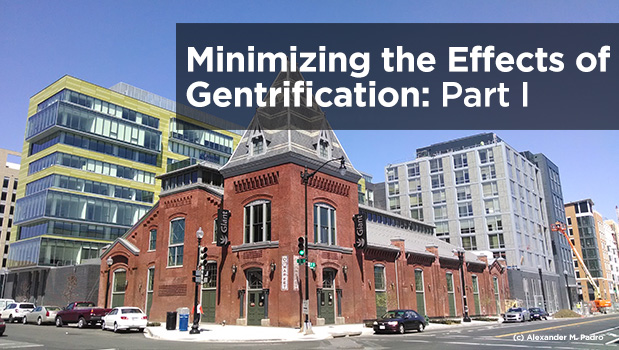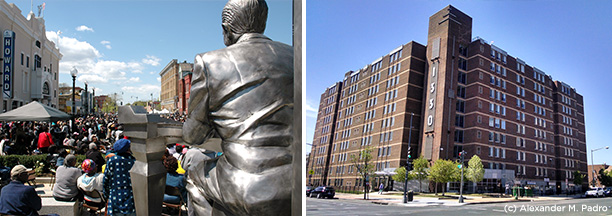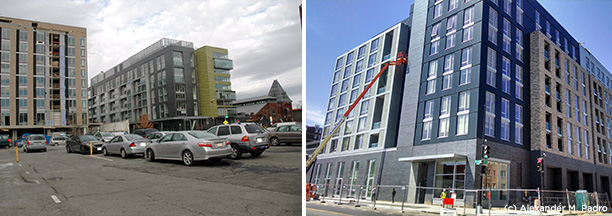Announcing the 2025 Science Discovery on Main Street Implementation Grantees
Meet the seven grantees of the 2025 Science Discovery on Main Street Implementation Grants!

Marion, Iowa © Tasha Sams
We work in collaboration with thousands of local partners and grassroots leaders across the nation who share our commitment to advancing shared prosperity, creating resilient economies, and improving quality of life.

Emporia, Kansas © Emporia Main Street
Made up of small towns, mid-sized communities, and urban commercial districts, the thousands of organizations, individuals, volunteers, and local leaders that make up Main Street America™ represent the broad diversity that makes this country so unique.

Chicago, Illinois © Main Street America
Looking for strategies and tools to support you in your work? Delve into the Main Street Resource Center and explore a wide range of resources including our extensive Knowledge Hub, professional development opportunities, field service offerings, advocacy support, and more!

Waterloo, Iowa © Main Street Waterloo
Your one-stop-shop for all the latest stories, news, events, and opportunities – including grants and funding programs – across Main Street.

Kendall Whittier — Tulsa, Oklahoma © Kendall Whittier Main Street
Join us in our work to advance shared prosperity, create strong economies, and improve quality of life in downtowns and neighborhood commercial districts.

In 2003, when Shaw Main Streets began its commercial revitalization and historic preservation efforts in its Washington, D.C., neighborhood immediately north of the city’s downtown, many of the neighborhood’s low and moderate income African American residents feared that new development, including the reoccupation of long vacant commercial and residential buildings, would force them out of their homes. These same families had seen urban renewal campaigns of the 1950s and 60s displace--in the name of progress--most of the residents of the city’s Southwest quadrant. Shaw residents were also aware that only a few decades before the upscale Georgetown neighborhood had a substantial African American population, whose traces of history—other than a few Black churches and a cemetery—remain only in a book entitled “Black Georgetown Remembered.” Would the same thing happen to Shaw’s African American community?
Fast forward to today. As of spring 2015, over 1,200 new units of housing have been completed, and nearly another 2,000 units are either under construction or already planned in Shaw with no net loss of residents of affordable units. Four high-rise, subsidized apartment buildings been completely renovated without a single rent increase to residents. New units have been constructed and tenants have used vouchers to stay in buildings that left the federal subsidy program. Over 170 new businesses have opened in the neighborhood, and residents have been able to obtain both construction and permanent jobs in the neighborhood as a result. That existing residents are benefiting from the conveniences and amenities that revitalization has brought is no accident. It’s the result of much planning and hard work by elected officials, non-profits, residents, businesses owners and developers.
The 50-plus block faces that comprise Shaw Main Streets’ service area include a diverse mix of buildings, with 19th and early 20th century commercial and mixed use buildings and late 20th and early 21st century low rise and high rise commercial and residential edifices. Four historic districts—Shaw Historic District, Greater U Street Historic District, Blagden Alley/Naylor Court Historic District and Mount Vernon Square Historic District—intersect the commercial district, which is home to nearly 300 businesses.
Shaw first developed in the years during and after the Civil War. The neighborhood’s status as an African American enclave began when a significant number of freed former slaves were housed in Union Army camps in the area. By the 20th century, schools, including a university, hospitals, churches, theaters and other institutions were built to serve African American residents. Segregation prevented Blacks from using Whites-only facilities and racial covenants prevented homeownership elsewhere in the city. The neighborhood was nationally recognized as a center of Black business and culture predating New York’s Harlem, with such notable figures as Edward Kennedy “Duke” Ellington, Langston Hughes, Carter G. Woodson, and Mary McLeod Bethune living, working, playing, and praying there. Black-owned and Black-serving businesses could be found all along Shaw’s main streets, patronized by locals and residents of the Washington metropolitan area alike.
Shaw, like many such urban neighborhoods, saw a downturn beginning in the 1950s. This was exacerbated by the April 1968 riots that followed the assassination of Dr. Martin Luther King, Jr., and resulted in dozens of burned-out blocks in Shaw. During the urban renewal campaign that followed, blocks of what once were two- and three-story row houses were replaced with 10-story high-rises and garden apartment complexes. Most of the 1,600 new housing units were built with federal financing, guaranteeing long term affordability for low and moderate income households, with churches responsible for much of the construction. However, urban renewal paid little regard to replacing commercial space lost in the riots. Remaining storefronts stayed vacant for decades; business owners never reopened after the riots or relocated out of the city as retail went suburban.

Public art celebrating the contributions of notable African Americans who lived in Shaw, like “Duke” Ellington, now promote the neighborhood’s rick Black history. 1970s high rise apartment buildings have been renovated and remain affordable housing for low and moderate income families. Photos by Alexander M. Padro, Courtesy Shaw Main Streets.
In 1997, the District of Columbia decided to construct a new convention center at the south end of the neighborhood. The $850 million, 2.3 million square foot structure spanned five city blocks and caused property tax assessments in the neighborhood to increase by 300%, or more. A typical home that sold for $150,000 in 2008 was assessed at nearly $700,000 seven years later. There was significant fear that longtime residents and homeowners on fixed incomes would be unable to continue to afford to live in Shaw due to the spike in property taxes.
In response, local legislation was enacted establishing caps limiting the amount of annual residential property tax increases that could be collected on owner-occupied homes. Combined with existing senior citizen property tax increase exemptions, the tax caps were successful in preventing tax increases from forcing longtime residents to sell their homes. Additionally, two new historic districts were established in 1999, joining two others previously designated. Historic district designation prevented the potential acquisition and demolition of hundreds of single family homes and small apartment buildings for large scale development, thereby further preventing the displacement of residents.
Washington, D.C., has some of the strongest tenant protection laws for apartment dwellers of any jurisdiction in the United States. These laws guarantee apartment dwellers the right to negotiate the purchase of their buildings, which in turn encourages property owners to keep existing housing affordable. Laws also ensure residents the right to return to new buildings built when their existing residences are demolished, allow residents to select which developers purchase their buildings, and ensure that residents have the opportunity to continue to reside in a renovated building without any increase in rent, either through building-wide subsidies or housing vouchers that cap rent at a maximum of 30% of tenants’ income. In buildings converted to market rate by owners opting not to renew existing federal housing subsidy contracts, housing vouchers allow residents to either stay in their apartments after renovation, or move to units in new buildings and pay no more than 30% of their household income in rent.
Nonprofit- and faith-based property owners also have a part in preserving affordability in the neighborhood. Instead of selling their buildings for multiples of their assessed value and building new affordable housing elsewhere, organizations opted to seek financing to renovate their buildings to prevent their tenants from being uprooted from their community. In only one case was a church-owned property in Shaw sold, and the 54 affordable units demolished were incorporated into a new 281-unit market rate apartment building.

New mixed-use buildings include affordable apartments, were built on empty lots or replaced lower density developments. Photos by Alexander M. Padro, Courtesy Shaw Main Streets.
Empty lots, many of which sat vacant for over three decades following their post-riot clearing, allowed thousands of new units of housing to be built without displacing residents or businesses. Developers of city-owned lots are required to include affordable units in their projects. Currently, a minimum of 30% of all units constructed on such parcels are required to meet affordable housing stipulations. The development of empty lots with affordable housing ends up as a win-win for neighbors. Parking lots, too, can be redeveloped as affordable housing. The nonprofit owners of the 1970s era Lincoln-Westmoreland Apartments high-rise are currently building a new 56-unit affordable residential project on the building’s parking lot.
Another key tool in facilitating new construction of affordable residential units are planned unit developments (PUD), which provide zoning relief for construction of taller buildings with more units. The Hodge, a 90-unit all-affordable senior building completed in 2014, is an example of how a PUD was used to create new affordable housing. It is part of the 1 million square foot City Market at O development, which incorporates a fully-restored 1881 public market building with an additional 560 units of market rate housing, a 180-room hotel, and 87,000 square feet of retail. City Market at O’s developers needed community support in order to obtain approval of the PUD for the project, and the Hodge was a key part of obtaining that endorsement. Renovation of existing affordable buildings can also result in the creation of additional units within the same building.
Many factors and tools were put to work in Shaw to help minimize the displacement of low and moderate income African American residents in Shaw Main Streets’ service area during its revitalization. The availability of empty lots for new projects, affordability requirements on public land, planned unit developments, tenant protection laws, property tax caps, housing vouchers, historic district designation, and the commitment of nonprofit and faith-based property owners to stay in the neighborhood contributed to Shaw’s success.
In Part II, find out what demographic shifts have occurred in Shaw and how an independent business owner was able to avoid being displaced by a major development.
Alexander M. Padro has led Shaw Main Streets in Washington, DC, since 2003, as founding Board Chair and as Executive Director since 2004. He is an eight-term elected official, representing the Shaw neighborhood since 2001.